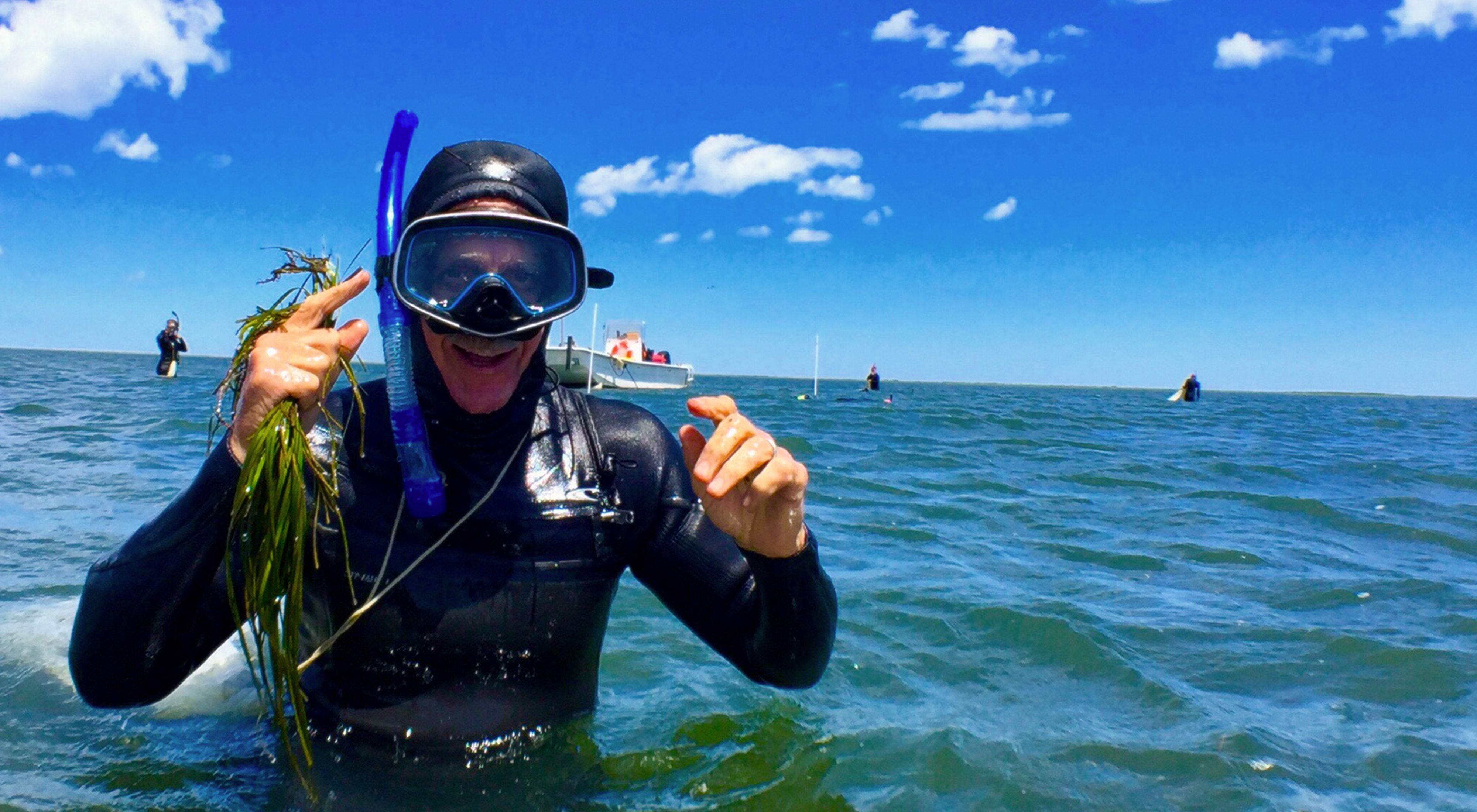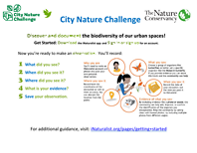- Phone: 540-335-1302
- Email: vavolunteers@tnc.org
-
Follow
Virginia Volunteer Stories
Did you know?
- 70 years ago, before The Nature Conservancy had strategies, staff or even a mission statement, it had volunteers.
- Across TNC we mobilize more than 17,000 volunteers across 45 states donating a total of 200,000 hours each year—a contribution worth $5 million annually.
Explore opportunities below and learn how you can get connected. There's more than one way to volunteer for TNC in Virginia!
More Volunteer Opportunities
View All Opportunities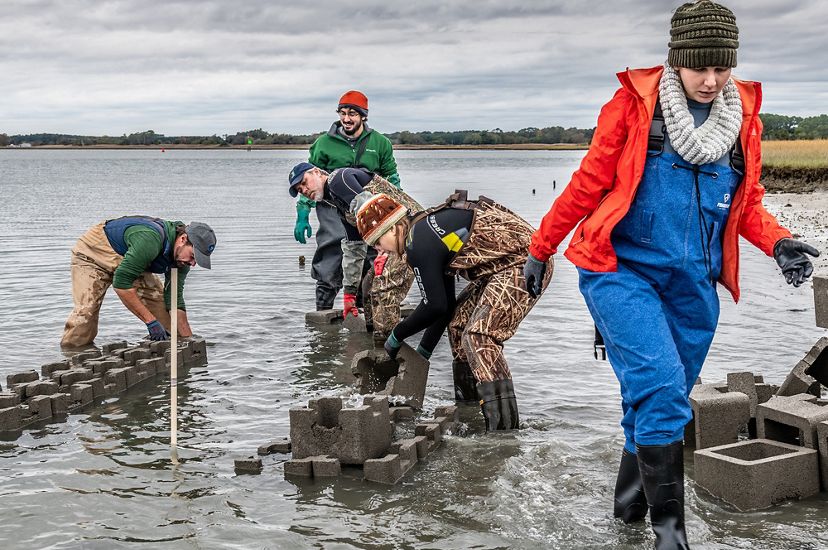
Despite the challenges of COVID-19, we've had many accomplishments to celebrate over the last several years. We're grateful for the volunteers who have given back in a big way, both through in-person events and online engagement and training opportunities.
In 2021, 700 volunteers participated in more than 70 projects around the state, donating nearly 6,000 hours of their time in more than 30 locations—a contribution worth $175,000.
Families took action to clean up their watershed, teams collaborated to install oyster castle substrate and individuals monitored wildlife for conservation. Volunteers inspired positive change in their communities, gave students outdoor learning experiences and partnered with other organizations to develop skills and new connections.
For more information about how you can get involved, contact the Virginia Volunteer Program by email at vavolunteers@tnc.org.

TNC Virginia's Volunteer Newsletter
Sign upIn addition to participating in work days, trail maintenance and cleanups, our volunteers perform internet research, help at events and complete administrative tasks in the office. Some needs we regularly seek to fill include:
- Preserve Stewards: Visit select preserves at least 4 times a year to assess trail and preserve conditions and perform basic trail maintenance by removing fallen branches and overgrown vegetation.
- Volunteer Photography/Videography: Take pictures and/or video throughout the year for use in TNC's Virginia publications, website and social media.
- Social Media: Share posts from Facebook, Instagram and Twitter accounts with your personal networks to help spread the word about our work across the Commonwealth.
- Environmental Education: Volunteer with the Volgenau Virginia Coast Reserve and assist with outdoor field experiences for 5th, 7th, and 10th grade classes during the school year (September-May).
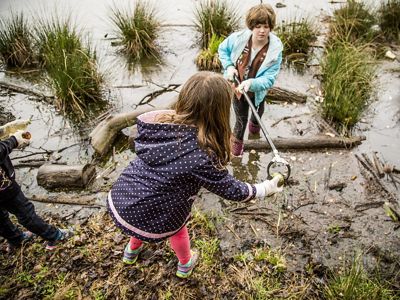
Volunteers in Action
2025 marks the 10th year TNC has partnered with Fairfax County Park Authority in Northern Virginia to host a Chesapeake Bay watershed cleanup. The goal of the cleanup is to keep trash and debris out of waterways that flow into the bay.
Over the past nine years, 4,179 volunteers cleaned more than 150 miles of stream, shoreline and trails, removing 29.1 tons of trash from more than 25 locations, giving 9,763 hours of service.
The most common items found during our cleanups include plastic bottles and bags, cans, cigarette butts, styrofoam and glass bottles.
While the numbers are impressive, it’s the stories that make this effort successful, too. Many volunteers express how the cleanup impacted their children and how it opened their eyes to some of the environmental challenges we face. We also get a lot of people asking how they can continue to make a difference.
2025 Watershed Cleanup
Join your community and neighbors to remove trash from your local waterways.
Watershed Cleanup Through the Years
The annual watershed cleanup event is a popular event for families and offers an opportunity to give back to nature and the community.
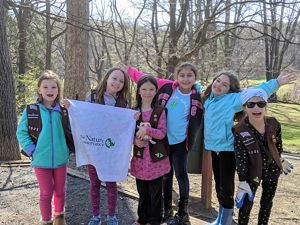
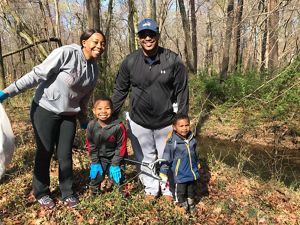
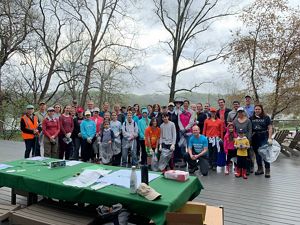
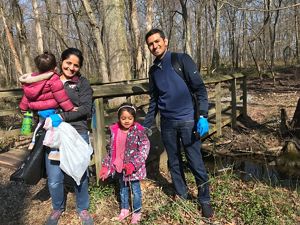
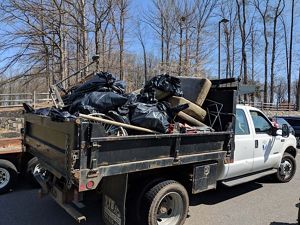

Fairfax County Cleanup 2019: The annual watershed cleanup event is a popular service project for local Girl Scout troops. Roundtree Park. © Jeanne Chang / TNC

Fairfax County Cleanup 2019: Doing something good for the community and for nature is a family affair! Ellanor C. Lawrence Park. © Patricia Greenberg

Fairfax County Cleanup 2019: 40 volunteers collected 50 pounds of trash at Riverbend Park, including 50 golf balls. © Christopher Topik

Fairfax County Cleanup 2019: Doing something good for the community and for nature is a family affair! Ellanor C. Lawrence Park. © Patricia Greenberg

Fairfax County Cleanup 2019: A couch, Safeway shopping cart and bikes were the larger ticket items collected at Ossian Hall Park. © Megan Whatton / TNC

Each year, TNC and the Virginia Institute of Marine Science (VIMS), along with several partners in the Seaside Heritage Seagrass Community Restoration Program, begin another chapter in the largest seagrass restoration project in the world!
And you can be a part of it.
Volunteer snorkelers and water lovers are needed to collect millions of eelgrass seeds offshore of Oyster on Virginia's Eastern Shore. Volunteers must sign up to get updates as collection days each year are weather dependent and cancellations may occur.
Trips will last from 4-5 hours. Volunteers will meet at the eelgrass tanks near 6493 Sunnyside Road, Cape Charles, VA. If you have not collected before we highly encourage you to sign up for at least two collection days.
For more information or to sign up, call or email Jen Dalke, volunteer program manager, at jdalke@tnc.org or 540-335-1302 (cell).

Eelgrass (Zostera marina) is a simple seagrass that once thrived in the coastal bays of Virginia. In the early 1930s, a noxious slime mold and the powerful Chesapeake-Potomac Hurricane combined to devastate seagrass meadows in Virginia’s coastal bays. The Seaside Seagrass Community Restoration Program has been conducting highly successful efforts to restore eelgrass in the nearby coastal bays since 1999.
Each spring since 2008, 40 to 60 volunteers have signed on and suited up to collect eelgrass, a simple seagrass that once thrived in the coastal bays of Virginia. Over more than a decade nearly 500 volunteers have given 2,175 hours to the effort.
Volunteers collect reproductive shoots containing ripe seeds from the underwater plants. The shoots are measured into water tanks where the seeds are then cured, separated and prepared for fall planting.
VIMS and TNC have broadcast more than 72 million seeds into 600 acres to help accelerate the natural spread of eelgrass, which now covers almost 9,000 acres in South, Spider Crab, Hog Island and Cobb Island bays.
The program's success offers a blueprint for restoring and maintaining healthy marine ecosystems around the world.
-
Volunteers should be comfortable with snorkeling and being underwater. During low-tide collection, the water will be about waist deep.
Collection takes place in the seagrass meadows of South Bay off Oyster, Virginia, on the Eastern Shore. Departure times vary based on the tide.
Volunteers board an open 24’ Carolina Skiff to get to the collection site. We can only transport those who are actually collecting.
Trips typically last from 4-5 hours.
-
The collection schedule is dependent on weather, as well as seed ripening. We try to collect a few days before peak ripening, during peak ripening and a few days after peak ripening, all of which can be difficult to predict. Typically these dates fall during the last week of May into the first week of June.
Weather and timing are variable, and trips may change on short notice. It is important that volunteers are flexible. For those who are inexperienced, we highly encourage you to sign up for at least two collection days.
It is very important to show up if you sign up so that we can plan transportation and logistics appropriately. Trips typically last from 4-5 hours. If you have not collected before, we highly encourage you to sign up for at least two collection days.
-
It is important to note that volunteers need to be flexible, as collection trips may be cancelled last minute due to conditions: choppy water, wind, etc. It is the volunteer’s responsibility to determine if a collection date has been cancelled.
TNC is not responsible for any lodging, equipment or travel costs incurred if a collection date is cancelled.
We will send you an email if the workday is cancelled. If you would prefer to have a phone call or text, please contact Jen Dalke at jdalke@tnc.org or 540-335-1302.
-
TNC is not able to provide masks and snorkels; volunteers will need to bring their own along with wetsuits.
You need a wetsuit, face mask, snorkel, towel(s) and swim suit. There is no good place to change on the boat or at the meeting location.
Bring drinking water and snacks/lunch. If you have special dietary needs be sure to bring what suits you.
The water temperature will be around 65-70 degrees F. You may also prefer some type of water shoe or hood. You are responsible for your personal gear. 70 degrees sounds warm, but after an hour you will get chilly. Dress in layers.
-
There will be on-site training each collection day. Volunteers will be trained on how to identify the reproductive shoots of the eelgrass plant and how to collect and bag them along with other related educational information.
-
The Chesapeake Bay Bridge Tunnel has toll charges. Visit the CBBT website for cost information and other details.
-
If overnight accommodations are needed, please contact one of the following local businesses for rates and availability.
- Kiptopeke State Park: Camping, family lodges, RVs and yurts available. Reserve online or call 1-800-933-PARK.
- Sunset Beach Resort Hotel: Call 757-331-1776 to reserve a room.
- Cape Charles House Bed and Breakfast: Call 757-331-4920 to reserve a room.
- Seagate Bed and Breakfast: Call 757-331-2206 or email sea_gate@verizon.net to reserve a room.
- Hampton Inn, Exmore: Call 757-442-7722 to reserve a room.
- Quality Inn & Suites, Exmore: Call 757-442-7378 to reserve a room.
-
Our thanks to the partners who make this event possible.
- Hampton Roads Community Foundation
- Virginia Coastal Zone Management Program
- Norfolk Southern Foundation
- National Oceanic Atmospheric Administration
- The Campbell Foundation
- The Volgenau Foundation
- William and Mary's Virginia Institute of Marine Science
- Virginia Coast Reserve Long-Term Ecological Research
- US Army Corps of Engineers
- Virginia Marine Resources Commission
- Virginia Eastern Shore Keeper
Take a Closer Look
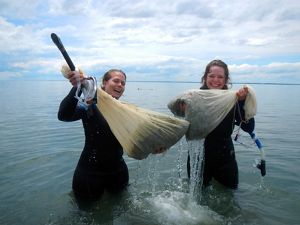
Restoring Eelgrass on Virginia’s Eastern Shore
Go into the water and behind the scenes at the Volgenau Virginia Coast Reserve for the largest successful seagrass restoration project in the world!
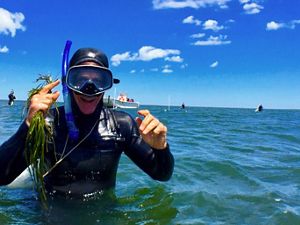
Marine Habitat Restoration
From building oyster reefs to establishing the largest successful eelgrass restoration effort in the world, we're putting science to work in Virginia's coastal bays.

Volgenau Virginia Coast Reserve
Empowering resilient coastal communities on Virginia's Eastern Shore.
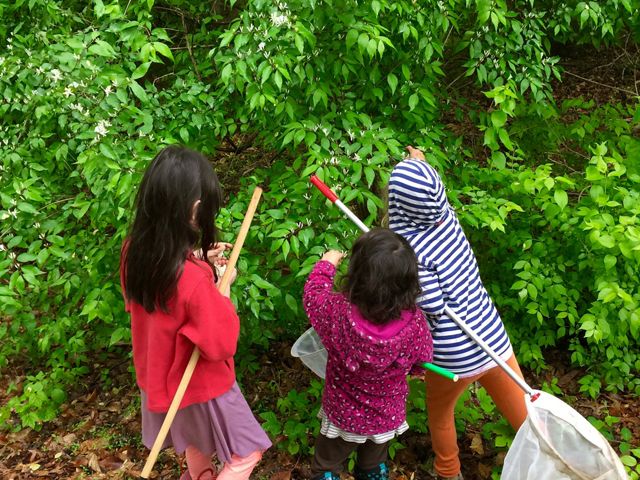
Which city on Earth has the most nature and the most engaged residents?
The City Nature Challenge aims to find out!
The City Nature Challenge (CNC) is an international community science effort to discover and document plants and wildlife in cities across the globe. Stay tuned for the 2025 City Nature Challenge!
Explore Your World
The City Nature Challenge encourages people to discover and document the biodiversity of our urban spaces. What began in 2016 as a friendly challenge between Los Angeles and San Francisco has now grown to an international event!
There are many ways to look for nature right in your own backyard. Discover the plants that are growing on their own and the insects and pollinators that live in and around our homes and yards. You never know what you might find!
Join the 2025 City Nature Challenge in Virginia!
From April 25 - 28, 2025, join Virginians and others worldwide for this challenge! Don’t let the word “city” fool you—observations can be made anywhere, including your own backyard.
How to Find Insects
Insects are probably some of the easiest organisms to find in and around our homes, since they’re abundant and incredibly diverse! But where should you look to find them? What can you use to catch them?
These sites provide some guidance on how to find and temporarily hold insects. Be sure to release them after you've posted your observation on iNaturalist!
Moth Lighting
Setting up a light and a sheet to attract moths is a simple and easy way to bring more nature into your backyard. Photographing moths on the sheet is easy, and you’ll definitely attract other flying insects as well!
Science Friday has a great set of instructions for observing moths, and the Devon Wildlife Trust's video shows how to build your own moth light to attract a wider variety of moths. (Note: in the video, "torch" is British for flashlight.)

Get Involved
It’s easy to get involved using the iNaturalist app (free on the App Store or Google Play). Just take a picture of a plant or animal and upload it to the app. Observations made during City Nature Challenge also provide valuable data for scientists, land managers, non-profits and governments about the areas that they help to protect.
Explore your neighborhood parks—or even your own backyard. There's nature all around you!
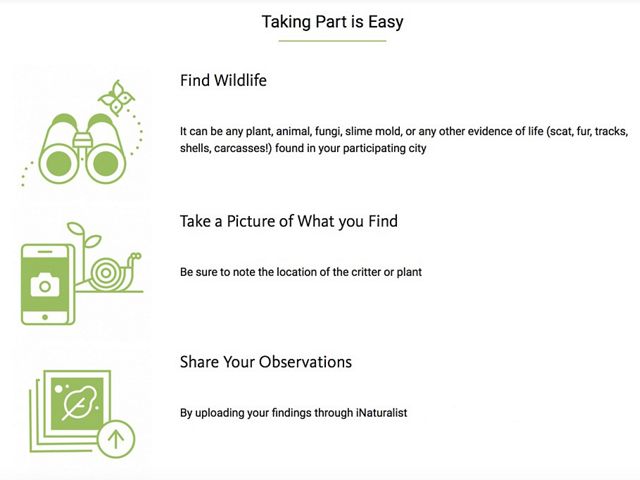
Download
Virginia’s Preserve Volunteer Community Program provides a vital service to help up maintain and monitor our public preserves across the state.
How can you get involved?
- Community Members—become involved with a preserve without committing time to stewardship work. Receive periodic updates about the preserve and special events.
- Preserve Stewards—visit a preserve at least 4 times a year to assess trail and preserve conditions and perform basic trail maintenance by removing fallen branches and overgrown vegetation.
- Preserve Leaders—demonstrated commitment to the preserve and willingness to take on additional responsibilities like managing communication & scheduling, leading workdays, guiding naturalist hikes.
Please contact the Virginia Volunteer Program by email vapreservestewards@tnc.org to receive further information.
Positions are available at:
- Alexander Berger Preserve, Spotsylvania County
- Bottom Creek Gorge Preserve, Montgomery County
- Cumberland Marsh Preserve, New Kent County
- Falls Ridge Preserve, Montgomery County
- Fortune's Cove Preserve, Nelson County
- Fraser Preserve, Fairfax County
- Warm Springs Mountain Preserve, Bath County
Preserve Volunteer Program Resources
- Preserve Inspection Report Form (.pdf)
- Alexander Berger Volunteer Program (.pdf)
- Bottom Creek Gorge Volunteer Program (.pdf)
- Cumberland Marsh Volunteer Program (.pdf)
- Falls Ridge Volunteer Program (.pdf)
- Fernbrook Preserve Volunteer Program (.pdf)
- Fortune's Cove Volunteer Program (.pdf)
- Fraser Preserve Volunteer Program (.pdf)
- Warm Spring Mountain Volunteer Program (.pdf)
Preserve Maps
- Alexander Berger Trail Map (.pdf)
- Bottom Creek Gorge Trail Map (.pdf)
- Cumberland Marsh Trail Map (.pdf)
- Falls Ridge Preserve Trail Map (.pdf)
- Fortune's Cove Trail Map (.pdf)
- Fraser Preserve Trail Map (.pdf)
- Warm Springs Mountain Bear Loop Trail Map (.pdf)
- Warm Springs Mountain Ingalls Overlook Trail Map (.pdf)
- Warm Springs Mountain Sandy Gap Trail Map (.pdf)
Want to be a part of our conservation efforts on Virginia’s Eastern Shore?
Opportunities are available as an island or boat ramp steward.
Island steward is a volunteer position best suited for a person who lives on the Eastern Shore of Virginia who visits TNC’s barrier islands by their own means and would like to serve as a TNC representative on these occasions
Boat ramp steward is a position for someone who is interested in volunteering to distribute educational brochures at seaside boat ramps on weekends, especially holiday weekends, throughout the summer.
Volunteer stewards act as official representatives of TNC’s Volgenau Virginia Coast Reserve program, to educate visitors about the sensitive natural resources of VVCR’s barrier islands by talking with visitors and handing out brochures as needed. The steward’s educational efforts focus on, but are not limited to, breeding shorebirds and colonial waterbirds. Duties include:
- Attend annual training sessions at TNC’s office in Nassawadox, typically held in early spring.
- When on the islands and engaging in stewardship responsibilities, educate visitors about the sensitive natural resources on the islands through casual conversation and distribution of informational literature.
- Report incidences of use-policy violations immediately to TNC staff.
Commitment:
No regular island visitation schedule will be set; steward responsibilities will be on an on-going, opportunistic basis, when stewards choose to visit the islands. Stewards interested in volunteering at boat ramps can set their own schedule and report days and hours spent to TNC staff.
Qualifications include:
- Local Eastern Shore resident.
- Excellent communication skills which can positively and effectively, yet casually, teach all island visitors.
- Desire to help protect the biodiversity of the Volgenau Virginia Coast Reserve through education of island visitors.
- Must have transportation to get on and off the islands, as well as familiarity with the local waterways unless only interested in volunteering at boat ramps.
- Must undergo a background check (requires SSN) and Nature Conservancy Youth Safety Qualifications prior to volunteering which will take 1.5-2 hours of time.
We Can’t Save Nature Without You
Sign up to receive monthly conservation news and updates from Virginia. Get a preview of Virginia's Nature News email

Take a Closer Look

Volgenau Virginia Coast Reserve
Empowering resilient coastal communities on Virginia's Eastern Shore.

Barrier Islands
The longest expanse of coastal wilderness remaining on the east coast.
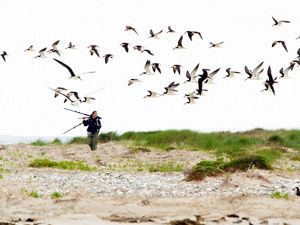
Migratory Bird Conservation
Guided by decades of research & monitoring, our scientists are helping to protect migratory bird populations throughout VVCR's coastal habitats.
